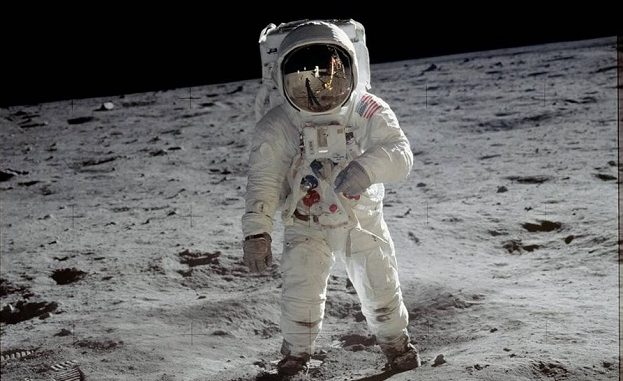
The Monkton Stargazers at Monkton Nature Reserve will be celebrating the 50th anniversary of the first Moon landing on the Friday, July 12 and Saturday, July 13 from 6pm to 9pm each day.
In the main building knowledgeable guides will set the scene and provide visitors with information about the Moon and the landings.
People can take part in fun activities to understand how the Moon was formed and learn what it would be like to stand on the Moon as well as have the chance to see the craters on the Moon up close through the main telescope in the Observatory.
Also some members will be bringing their own telescope for visitors to look through.
Apollo 11 was the spaceflight that landed the first two people on the Moon. Commander Neil Armstrong and lunar module pilot Buzz Aldrin, both American, landed the Apollo Lunar Module Eagle on July 20, 1969, at 8:17pm. Armstrong became the first person to step onto the lunar surface six hours later on July 21 at 2:56am Aldrin joined him 19 minutes later. They spent about two and a quarter hours together outside the spacecraft, and collected 47.5 pounds (21.5 kg) of lunar material to bring back to Earth.
With the help of the Hilderstone Radio Society the stargazers will also use a radio signal to track an astronaut who has landed in the Siberian forests (Monkton Nature Reserve!), control a lunar rover and reproduce artist Katie Paterson’s Morse code exhibit.
A licensed radio operator will send the song ‘Happy Birthday’ in Morse code to be reflected off the cliff face of the Reserve. It will be received and translated back into music.
The Moon has inspired poets through the ages from Saphho in 600 BC to the present day. At 7.30pm both days there will be poetry readings about the Moon, including one written especially for the event by Cara Sullivan.
Monkton Stargazers have chosen July 12-13 for celebrations because the Moon is at a good phase and is visible from 6pm whereas on July 20 it rises at midnight.
The event is £5 for adults, £2.50 for children and free to members of the Monkton Nature Reserve.
Find more at the event page here
Moon facts
The Moon is the Earth’s only natural satellite. A natural satellite is a space body that orbits a planet, a planet like object or an asteroid.
It is the fifth largest moon in the Solar System.
The average distance from the Moon to the Earth is 238857 miles.
The Moon orbits the Earth every 27.3 days.
Mons Huygens is the tallest mountain on the Moon, it is 4700 metres tall, just over half the height of Mt Everest (8848m).
The Soviet Union’s Luna program featured the first successful landing of an unmanned spacecraft on the surface of the Moon in 1966.
The USA’s NASA Apollo 11 mission in 1969 was the first manned Moon landing.
The first person to set foot on the Moon was Neil Armstrong.
The Moon is very hot during the day but very cold at night. The average surface temperature of the Moon is 107 degrees Celsius during the day and -153 degrees Celsius at night.
The Earth’s tides are largely caused by the gravitational pull of the Moon.
The phases of the Moon are: New Moon, Crescent, First Quarter, Waxing Gibbous, Full Moon, Waning Gibbous, Last Quarter, Crescent, New Moon….
A lunar eclipse occurs when the Earth is between the Sun and the Moon.

